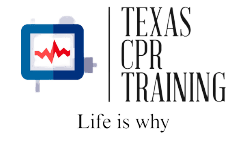
Bicycle Safety
Summer time is here!
For millions of Americans its also time to hop on their bikes! Not only is it a fun way to get some exercise and ride to work but it’s also a common cause of accidents. Bicyclists don’t always have a bike path or a bike lane on the way to their destination forcing them to share the road with cars, trucks, and commercial vehicles. According to the Injury Facts 2017 report by the National Safety Council, in 2015 there were more injuries associated with bicycles than swimming pools, skateboards, trampolines, and playgrounds combined. Bike safety is an important topic year round, but with approximately 80 million cyclists on the road and many more cars on the road precautions need to be taken to prevent accidents.
The most obvious bike safety tip is to wear a helmet. Every year head injuries are to blame for 75% of cyclist deaths.
Although they may not be a stylish summer accessory, wearing a helmet can save your life. People who wear a helmet are sixty percent less likely to have a head injury and fifty eight percent less like to have a brain injury. When a rider collides with a vehicle or other object they usually fly forward going head first.
Wearing a helmet!
Wearing a helmet is an excellent way to practice bike safety but not just any helmet will do. It’s important to make sure you have the right fit and style for the safest ride possible.
A good helmet is:
– Level on your head
– Touches all the way around
– Fits snuggly but not to tight
– Has vents
– The helmet won’t move more than an inch in any direction
– Does not have a square shaped shell or is aerodynamic
– Has thick straps
– Won’t pull off when buckled
When picking out a helmet with safety in mind pick a bright color for better visibility and one without a visor that could shatter or snap in a fall.
Know the Rules of the Road!
It’s also important to know the rules of the road. Bicyclists are required to abide by the same traffic laws as motorists. When sharing the road with motorists ride single file in the same direction of traffic. Look for people opening their car doors as well as other dangers including pedestrians crossing the street and road debris. When turning always use hand signals and proceed with caution.
What you wear while biking can make a huge difference in your level of bike safety. If a motorist can’t see you coming you’re more likely to be hit. Simply wearing bright colors will make you more visible to vehicle operators. Also be sure to check your bike’s reflectors. It should have reflective strips on the pedals and reflectors on the front, back, and spokes. An extra bike safety step is to put a rear-view mirror, a horn, and a bright and flashing headlight.
Avoid riding your bike at night. According to the National Highway Traffic Safety Administration the majority of bicyclist deaths happen between 6pm and 9pm especially in urban areas where there are more vehicles on the road. If you absolutely have to ride at night, always wear reflective clothing and of course, wear a helmet.
Another major bike safety consideration is never riding under the influence of alcohol. One in five cyclist death investigations revealed the cyclist was under the influence of alcohol. Their blood alcohol content (BAC) was either at .08 or higher. Every year there are unnecessary deaths occur due to impaired motorists and cyclists.
Ride safely this summer and practice these important bike safety tips. Remember that wearing a helmet might just save your life!
Take a CPR course!
Take a CPR and First Aid class to know what to do in an emergency. Texas CPR offers weekly training. Sign up at www.texascpr.com.
Bicycle Safety Links:
Safe Kids Worldwide
Bicycle Safety
Centers for Disease Control and Prevention
North Central Texas Council of Government
